Celosias (Celiosa spp.) commonly called cockscomb, feathered amaranth, woolflower and red fox, are warm-weather flowering plants that thrive in hot, humid Mediterranean areas. Mature size varies, with plants that reach heights of 3 to 4 feet and dwarf varieties that top out at only 6 inches.They are all easy to care for as long as their soil and sunlight requirements are met.
Although celosia is primarily grown as an ornamental plant in the U.S. it is a commonly grown vegetable throughout Africa. The leaves, tender stems and even young flowers are combined with other vegetables in soups and stews. Celosia leaves can be boiled or steamed and eaten as a side dish as well. Hot chili oil or lime juice can be added to give a little kick to the cooked celosia. The leaves are tender and will break down quickly, making celosia a good vegetable to cook in a hurry.
Celosia plants are classified into three groups:
- Crested type (Celosia cristata)
- Plume type (Celosia plumosa)
- Spike or wheat type (Celosia spicata)
All varieties of celosia thrive in heat and tolerate drought, once established. Combined with other plants, the smaller celosia varieties also make attractive container plants. Celosia lasts for a long time as a cut flower, and when dried, is a beautiful accent in a dry flower arrangement.They are commonly grown as annuals but can survive winters
Crested Celosia
The flower heads of crested celosia (Celosia cristata), also called cockscomb celosia, resemble the structures of a brain, while some of the narrower flower heads look like a rooster’s comb.Tall varieties grow to 3 feet tall and 1 1/2 feet wide, while dwarf varieties grow 10 inches tall and 6 inches wide. Crested varieties have fan-shaped, velvety flower clusters that are rippled. Colors vary and include orange, yellow, red, violet, pink and white. Crested cockscomb plants are suitable for outdoor containers and may need staking when grown in flower beds.
Examples include:
- Toreador
- Chief Series
- West Indian cockscomb
- Celosia palmeri
- Celosia Floribunda
- Red Velvet
Plume Celosia
The flower heads of plume type celosia (Celosia plumosa) are soft, velvety and feathery. Plants, when young, may also produce side shoots.Tall varieties grow 2 1/2 to 3 feet tall and 1 1/2 feet wide, while dwarf varieties grow 1 foot high and half as wide. Colors include shades of yellow, orange, crimson, red and purple. This variety can also grow well in outdoor containers, and taller plants do require staking.
Examples include:
- Sylphid
- Apricot Brandy
Spike Celosia
Spike celosia (Celosia spicata) is also called wheat celosia, because its flower heads resemble heads of wheat. This type of celosia looks almost like a shrub, because each plant produces many flower stalks.These cultivars are often between 12 and 36 inches tall and are the most limited in colors compared to the plumed and cockscomb varieties. Also, their flower heads are smaller to the other celosia types.
Examples include:
- Glowing Spears Mix
- Flamingo Feathers
- Celosia virgata
Types of Celosia
Toreador

Toreador (Celosia cristata “Toreador”), which grows 18 to 20 inches tall and has a bright red 12-inch flower head. Toreador celosia flower heads are prized for use in dried arrangements because they do not lose their color as some other flower varieties do.
Chief Series
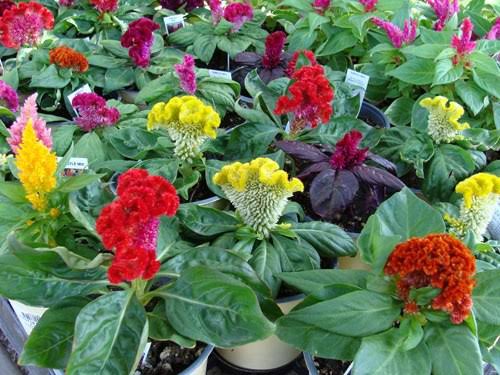
The Chief Series (Celosia cristata “Chief Series”) is a mix of 40-inch tall plants with flower heads up to 7 inches across in brilliant colors of dark red, carmine, gold, rose or red and yellow bi-color.
West Indian cock’s comb
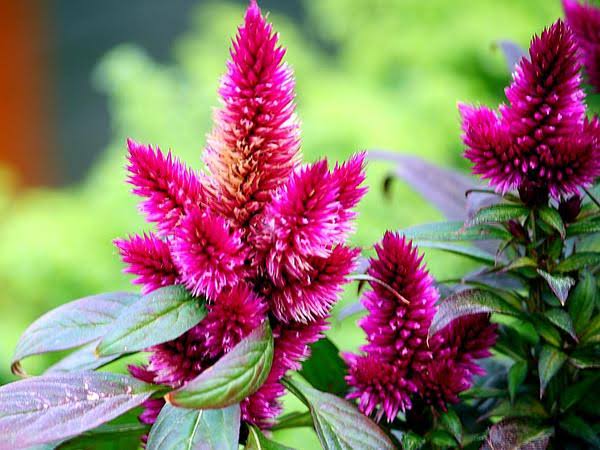
Celosia nitida is commonly known as West Indian cock’s comb. The plant can grow up to 2 m (6 feet) in height, and flowers in fall to winter.
Also Read: Major Varieties of Cosmos Flowers
Red Velvet celosia
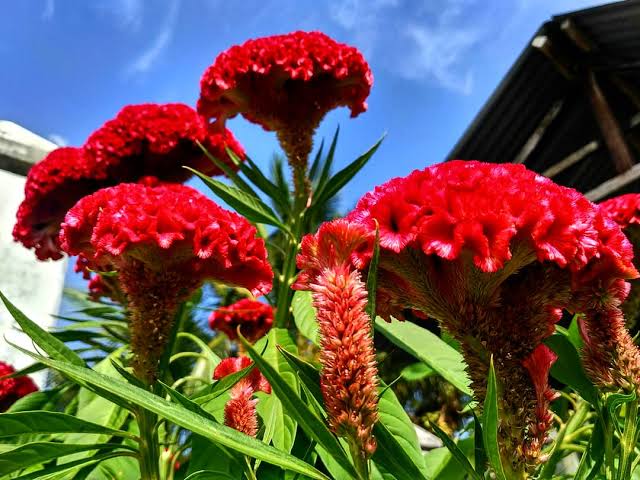
Red Velvet celosia (Celosia “Red Velvet”) is an annual cultivar of flower prized for its fuzzy, blood-red flowers and erect, 10- to 18-inch-tall growth habit.
Celosia palmeri

Celosia palmeri, commonly known as Palmer’s cockscomb grows to between 1-2 feet tall. Flowering takes place from summer to winter.
Celosia Floribunda

They look more like tentacles with green to brown little seeds on them, depending on the stage of maturity. These are actually small flowers though they grow between 1-2 feet tall.
Also Read: Types of Agapanthus Flowers
Sylphid
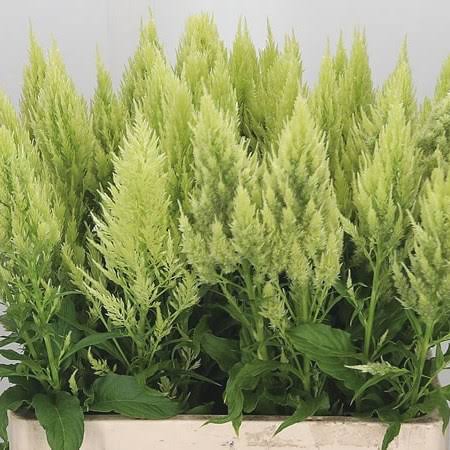
Sylphid (Celosia plumosa “Sylphid”) carries long plumes of lime green flowers from January until frosts. A terrific cut flower it also makes a good border plant. It grows 60 to 80cm tall by 50cm wide.
Apricot Brandy
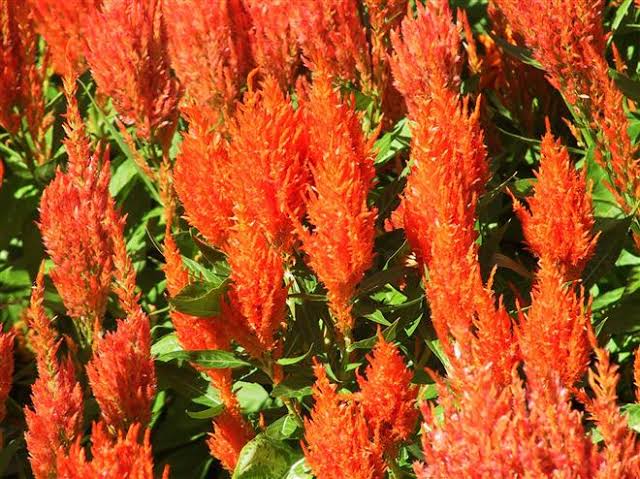
Apricot Brandy (Celosia plumosa “Apricot Brandy”) is a 6- to 12-inch plant with reddish-purple leaves and apricot-orange plumes. The apricot orange celosia plumes are so uniform and symmetrical that spectacular display beds are possible when grown as low background or hedge flowers.
Also Read: Popular Varieties of Amaryllis Flower
Flamingo Feathers

Flamingo Feathers (Celosia spicata “Flamingo Feathers”) is a well-branched plant with rose-pink flowers, growing to 3 or 4 feet tall.
Glowing Spears Mix

The Glowing Spears Mix (Celosia spicata “Glowing Spears Mix”) consists of 24- to 30- inch plants with white, pink and dark red flower heads.The plants require moderate hands-on care to prosper, but they will perform best if allowed to establish a mature root system before transplant.
How To Grow Celosia
Celosia perform best in garden beds and will often be stunted if grown in containers. They can be planted outdoors once soil temperatures are above 55 degrees Fahrenheit. Plants should be spaced about 8-12 inches apart depending on cultivar. These are the following requirements for choosing a site for celosia:
- Must have full sun for 8+ hours a day. They perform best in a very warm location.
- Soil must be well drained. To improve drainage, compost or sand can be incorporated into heavy soils.
- Celosia prefer soils with a pH of 6-6.5 with a high organic matter content.
Further References
- Facts About Celosia: https://en.m.wikipedia.org/wiki/Celosia
- How To Grow Celosia: https://extension.umn.edu/flowers/celosia
- Types of Celosia: https://hort.extension.wisc.edu/articles/wheat-celosia-celosia-spicata/